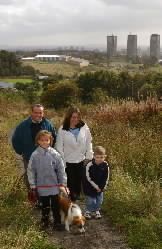Investments in green infrastructure can have a positive impact on local economic growth. The provision of good quality green space can attract businesses and services, and as a result can promote further inward investment, increase land and property values, and create jobs in the area. The value of good quality, accessible greenspace can also be quantified indirectly through a reduced cost in healthcare due to the use of green space for exercise and physical activity which reduces the prevalence of obesity and improves mental well-being.
The growth and development of deprived areas can be seen in the successful use of green space development initiatives:
The investments in green space help to improve the aesthetics of an area for the economic regeneration of deprived areas, and in turn can lead to a better quality of life for people in the area.
Further examples of where green space development initiatives have lead to growth and development in deprived areas can be obtained from the Newlands project.
Woods In and Around Towns Initiative (WIAT)

This Forestry Commission Scotland (FCS) initiative aims to increase the contribution of woodland to the quality of life in Scotland’s urban and post-industrial areas. This includes areas in and around:
The objectives between 2008 and 2011 include the creation of new woodland, bringing neglected woodland into active management and working with people to help them use their local woodland.
Further information on this programme can be found on the Forestry Commission Scotland WIAT web pages.
The Green Grid is the delivery mechanism for the ‘Greening the Gateway’ initiative in the Thames Gateway. It has two key objectives:
This involves the improvement of existing greenspaces, the integration of existing and new greenspaces, and the creation of networks of cycleways, bridleways and paths between them in order to make the region a more attractive place to live and work. Community engagement and participation plays a vital role in the achievement of these objectives and many diverse organisations and groups are involved with the implementation of the initiative.
The Green Grid has been split into three delivery areas: